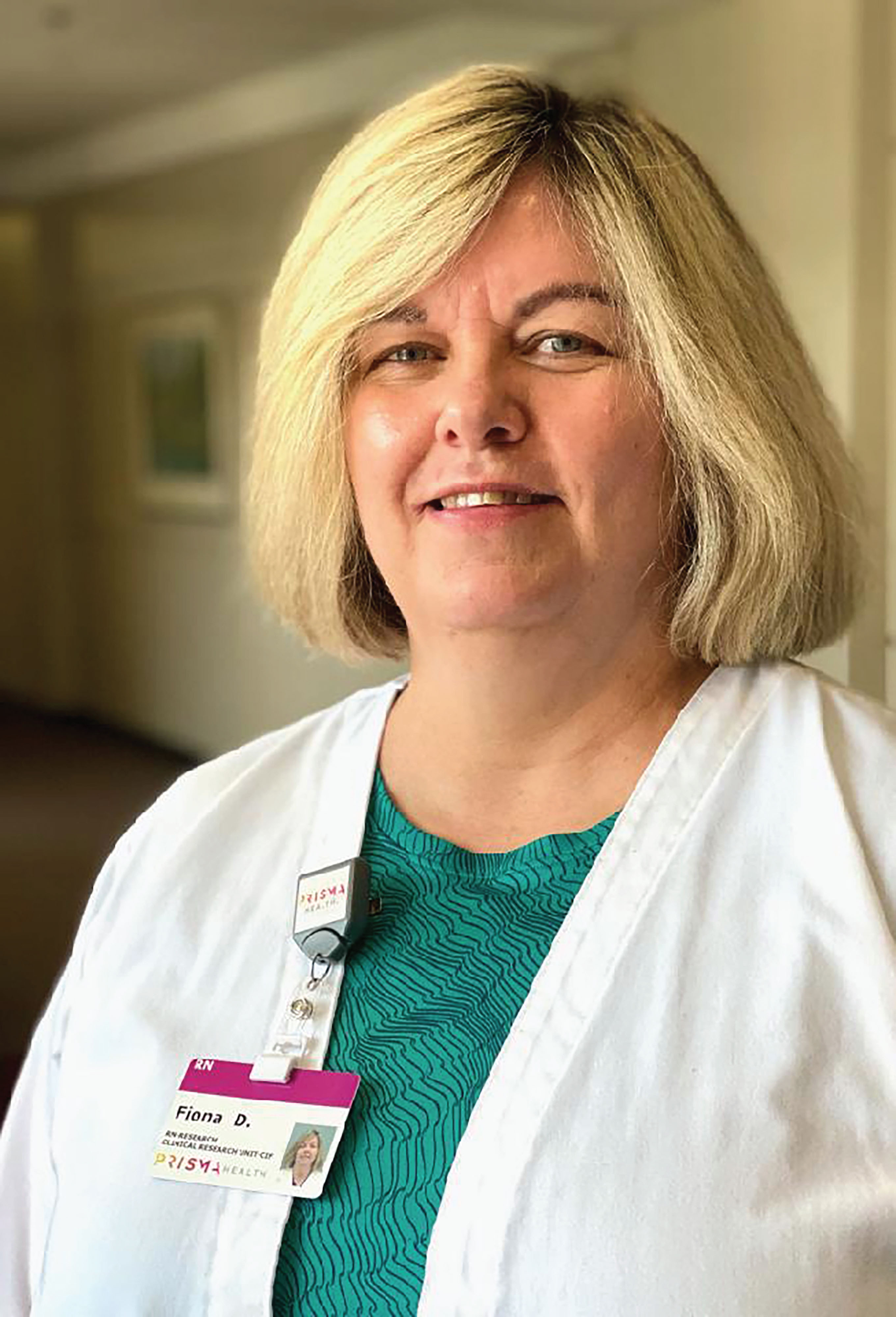As individual diseases, cancer diagnoses like pheochromocytoma (cancer of the adrenal gland), neuroendocrine cancers, and malignant mixed Mullerian tumors (also called carcinosarcomas) are rare, but collectively they’re more common than breast, colon, lung, or prostate cancer.
Rare cancers occur in fewer than 15 out of 100,000 people annually. Pediatric cancers meet that criterion because they have an incidence rate of 172.8 per 1 million in the United States. The diagnoses remain traditionally understudied and are often more difficult to prevent, diagnose, and treat than more common cancers. Rare cancers are associated with lower survival rates and challenges in decision-making for patients, providers, and policymakers.
Improved Research Efforts
NCI and other global leaders formed the International Rare Cancer Initiative in 2011. Since then, nurse scientists and other researchers at institutions like Prisma Health in Greenville, SC, have enhanced the understanding of rare cancers.

According to ONS member Fiona Davidson, BSN, RN, CTR, RN, nurse research coordinator at Prisma Health’s Institute for Translational Oncology Research (ITOR) and member of the South Carolina Upstate ONS Chapter, patients with rare cancer diagnoses are referred to ITOR’s rare tumor clinic for physician consultations or to participate in ITOR’s rare tumor study, which received institutional review board approval in 2016.
Davidson has cared for patients with cholangiocarcinoma, malignant mixed Mullerian tumors, adenoid cystic cell carcinoma, clear cell of salivary gland, vaginal squamous cell, and anal, appendiceal, small bowel (duodenal), and anaplastic thyroid cancers.
“Most referrals come from internal oncologists,” Davidson said. “However, we do get regional referrals from in- and out-of-state practices.”
As of May 2021, the ITOR team screened 75 patients and enrolled 64 in the study. Davidson’s role includes assisting patients with the research consent process and coordinating the screening, treatment scheduling, and study participation.
“I’ve spent much of my 24 years as an oncology nurse either in regulatory roles or as a coordinator in the cancer registry. For both, little information—if any—is dedicated to rare tumors,” Davidson said. “However, as a research nurse, I have seen firsthand the treatment benefit, and I hope we can continue to build on the information learned through our study and become a center of excellence for patients with rare cancers.”
Complex Clinical Practice

ONS member Michelle Parson, RN, BSN, care coordinator at Taussig Cancer Institute at Cleveland Clinic in Ohio and member of the Cleveland ONS Chapter, cares for patients with a variety of rare soft tissue sarcomas, including leiomyosarcoma, which often starts in the abdomen or uterus, liposarcoma, nerve sheath tumors, Ewing sarcoma, and angiosarcoma.
“Prevention is difficult because we don’t fully understand what causes sarcoma. Often these cancers are diagnosed by accident, or through imaging studies to investigate patient-reported long-term pain,” Parson said. “Once diagnosed, patients often require access device placements, staging scans, and organ functioning tests before chemotherapy, so it’s important to help them coordinate their schedule, especially if they live far away from the treatment center.”
Once on treatment, some patients require hospitalization for neutropenic fevers. Parson’s team monitors labs one to two times a week, depending on the regimen. They also involve social work to help patients and caregivers find resources.
“We are lucky at Taussig to have a sarcoma team that includes medical oncology, radiation, surgery, social work, psychology, and nursing,” Parson said. “Our team works together to coordinate visits, minimize trips, provide lodging, and assist with transportation.”
Treatment options for sarcoma vary greatly based on the type and severity but typically include well-established chemotherapies commonly used for other diseases, which have significant adverse events, Parson said. Many patients with rare cancers also require growth factor and blood product support during treatment.
“Imaging is usually done every two cycles to verify the treatment is working,” Parson said. “Care plans can change quickly if the patient is not responding, which adds to their anxiety and fear about their future.”
Overcoming Obstacles From the Bench...
Rare cancer diagnoses present a variety of challenges throughout the care continuum. Davidson said that nurses must use clear, concise communication to ensure patients understand and are truly consenting to every step of the clinical trial process. Yet a key nursing challenge, and sometimes barrier to effective care, is financial toxicity.
“Because many rare tumor diagnoses do not have established standard treatment approaches, health insurance companies may not be willing to cover clinical trial therapies. Our oncology providers and other staff spend a lot of time appealing insurance denials,” Davidson said. “The U.S. Department of Veterans Affairs will not cover the cost of routine oncology services for a research study. Managed Medicare plans allow patients to participate in a research study, but their coverage reverts to the traditional 80%.”
In response, Davidson said, Prisma Health has a team of financial counselors and social workers to help patients with rare cancers access treatment and trials.
“We offer assistance through the clinical trial payment system if someone lives 50 miles or more from our facility,” Davidson said. “We have local hotels that offer special rates and a comprehensive adolescent and young adult assistance program for our younger patients.”
...to the Bedside
Sarcomas tend to grow quickly, and many are incurable, so Parson helps patients and caregivers manage anxiety.
“The biggest challenge I face is the emotional toll the diagnosis takes on the patient and family. Their lives permanently change,” Parson said. “Patients are overwhelmed with information, so I try to first find out what they heard and understand about their diagnosis and treatment plan.”
Parson also tries to balance care coordination with quality of life for her patients.
“We have difficult conversations about prognosis, potential lifespan, and making sure patients have their affairs in order,” Parson said. “But if a patient would like to go on a short vacation, gather with family, or attend a wedding, we try to accommodate it, at the provider’s discretion of course, by either delaying or holding treatment for a short time so they can feel good while enjoying their time away.”
Another priority for Parson is encouraging caregivers, who may feel defeated because they can’t make the pain, adverse events, or fear of the unknown go away for their loved one. Assisting with activities of daily living, cooking, and providing transportation and emotional support deserve recognition, so Parson makes a point to remind caregivers of all that they do.
“Providing emotional support is a big component of caring for these patients and caregivers, which can be taxing for any nurse,” Parson said.
Facing Rare Cancers Is Stressful for the Entire Care Team
“Nurses caring for patients with rare cancers can experience more distress than other clinicians,” Davidson said. “My patients with rare tumors in phase I research have such limited treatment options. Many times, hospice is the next step once they experience disease progression in the metastatic setting.”
Although Davidson said that nurses can feel discouraged facing that on a daily basis, clinicaltrials.gov may offer hope. She uses it to explore promising clinical trials for certain rare cancers.
Parson said that patient and caregiver distress is a factor that every oncology clinician manages. Nurses must understand that death is an uncontrollable part of life, but we can control how we help someone through the journey.
“Nurses are committed to helping others, which could be health maintenance, overcoming an illness, or end-of-life care,” Parson said. “When I meet patients for whom cure is unlikely, I think about how I might feel if I were in their situation and try to be available for emotional support.”
Parson frequently reaches out to her social work colleagues for additional resources to support patients and leans on her coping mechanisms to build resilience and grieve losses.
“Nurses spend a lot of time talking to our patients. They share their lives with us, so when they pass, I feel it’s important to have some type of grieving process,” Parson said. “My coping mechanism is to enjoy life and spend time with my loved ones. I enjoy gardening, crafting, and cooking. When one of my patients passes away, I reflect on the conversations we had. I may cry, make a toast, or reminisce about special moments we shared.”
Both Parson and Davidson said that the reward they experience from their work outweighs any grief.
“I enjoy caring for these patients throughout their journey,” Parson said. “Each one teaches me something about life, and working with them has helped me develop as a person.”
“I have the privilege to assist some of the bravest cancer warriors and their families,” Davidson said. “I draw inspiration from their courage and tenacity every day.”






